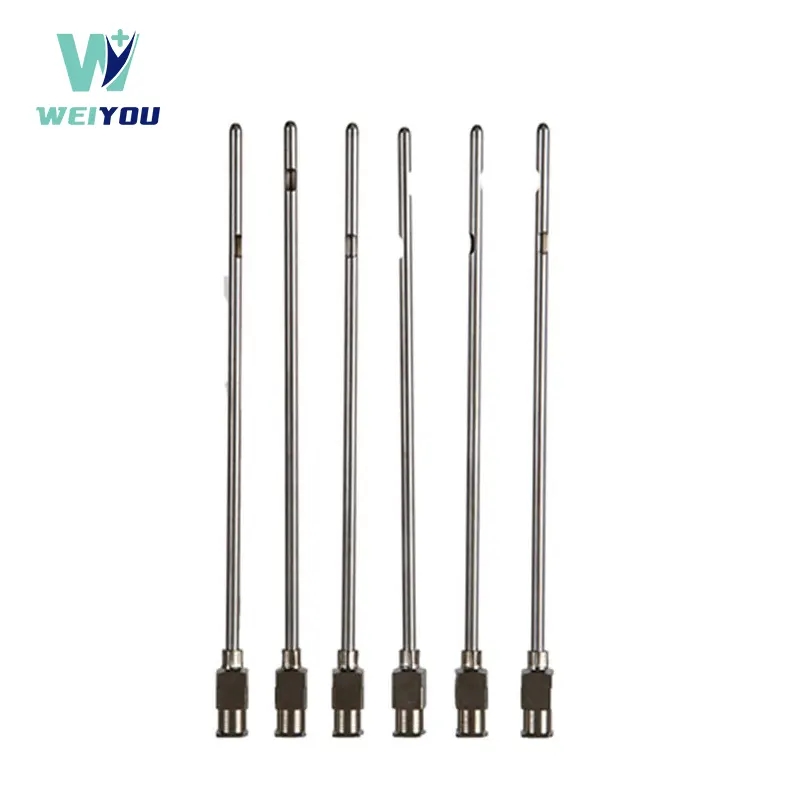Components of Veterinary Needles
2023-10-16
Veterinary needles are an integral part of the syringe system used for administering medications and fluids to animals. They consist of several components that contribute to their functionality and effectiveness. Here are the main components of veterinary needles:
1. Hub: The hub is the base of the needle that attaches to the syringe. It typically has a screw or Luer-lock mechanism that securely connects the needle to the syringe, preventing leakage and ensuring a tight fit during injections.
2. Cannula: The cannula is the hollow, slender tube of the needle that penetrates the skin and delivers the medication or fluid. It is often made of stainless steel or other materials that are durable and resistant to bending or breaking. The diameter of the cannula is referred to as the needle gauge, with smaller gauge numbers indicating larger diameters.
3. Bevel: The bevel is the slanted, sharpened tip of the cannula. It is designed to create a smoother entry point into the skin and tissues, reducing pain and trauma during insertion.
4. Shaft: The shaft of the needle connects the hub and the bevel. It can vary in length and thickness based on the intended use and the size of the animal. Longer needles may be needed for reaching deeper tissues or specific injection sites.
5. Lumen: The lumen is the internal space within the cannula through which the medication or fluid flows. The size of the lumen is related to the gauge of the needle, with larger gauge needles having larger lumens to accommodate thicker substances.
6. Needle Cover/Cap: Many veterinary needles come with a protective cover or cap that is placed over the bevel to maintain its sharpness and sterility before use. This cover is removed just before the needle is inserted into the animal.
7. Safety Features: Some veterinary needles include safety features such as retractable needles or covers that help prevent accidental needlestick injuries to veterinary staff or handlers after use.
8. Color Coding: Needles are often color-coded to indicate their gauge, making it easier for veterinarians and veterinary staff to quickly identify the appropriate needle size for specific injections.
9. Sterility: Veterinary needles must be sterile to prevent infections. They are usually packaged in sealed containers to maintain their sterility until they are ready for use.
10. Disposable vs. Reusable: Veterinary needles can be disposable (single-use) or reusable (sterilized and used for multiple procedures). Disposable needles are convenient and reduce the risk of cross-contamination, while reusable needles require proper sterilization procedures.
11. Needle Length: The length of the needle shaft varies based on the injection site and the depth of tissue penetration required. Different injection sites, such as intramuscular, subcutaneous, or intravenous, may necessitate different needle lengths.
Remember that choosing the appropriate needle gauge, length, and type is essential for safe and effective injections in veterinary medicine. Veterinary professionals should always follow recommended guidelines and best practices when selecting and using needles to ensure the well-being of the animals and themselves.



